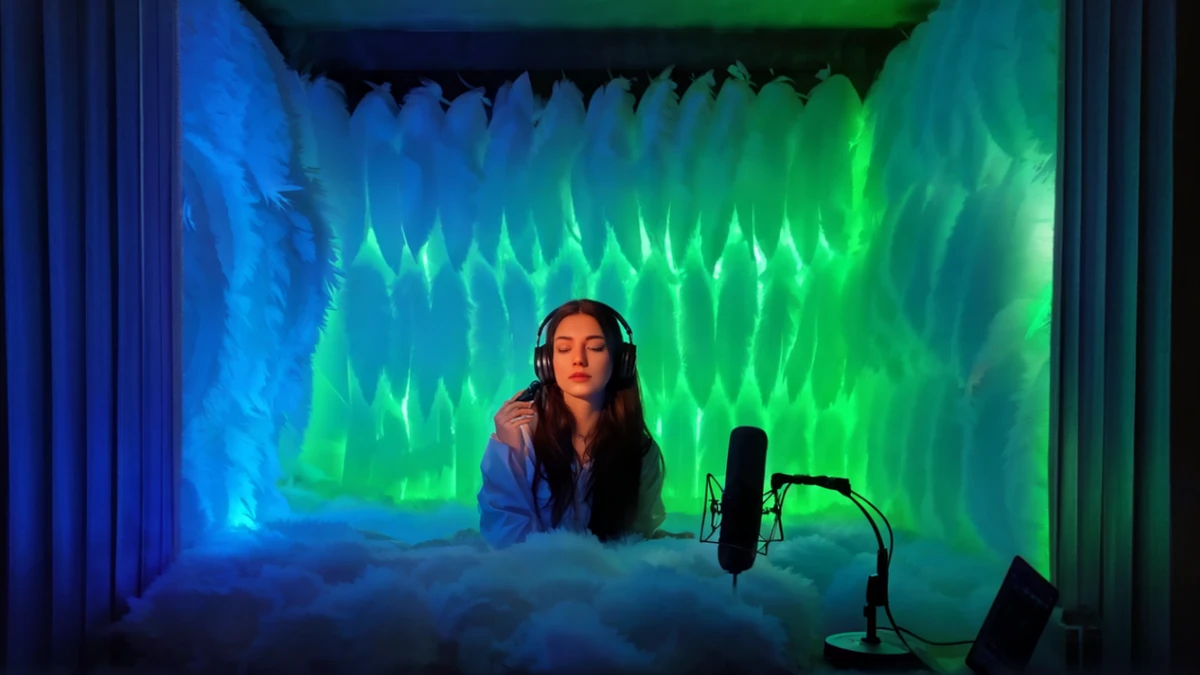Autonomous Sensory Meridian Response (ASMR) has captivated millions of people worldwide. This sensory phenomenon, often described as a tingling sensation starting from the scalp and moving down the back of the neck and spine, is typically triggered by auditory stimuli such as whispering, tapping, and brushing sounds. The calming and euphoric effects of ASMR make it a popular choice for relaxation and sleep aid.
In recent years, ASMR content has surged in popularity on platforms like YouTube, with creators amassing large followings by producing high-quality, immersive audio experiences. As the ASMR community grows, so does the demand for exceptional audio quality. Viewers seek an immersive experience that allows them to feel as though the sounds are happening right beside them.
To achieve this level of immersion, content creators need the right equipment. High-quality microphones are essential for capturing the subtle and intricate sounds that define ASMR. Without a good microphone, even the most meticulously crafted ASMR content can fall flat, failing to deliver the desired tingling sensations. For those just starting or looking to upgrade their setup, understanding the key features and options available for ASMR microphones is crucial.
By investing in a quality microphone, ASMR creators can enhance their content, attract more viewers, and provide a deeply relaxing experience that keeps audiences coming back for more. For tips on how to record audio from your browser, check out this guide.
Key Features to Look for in ASMR Microphones
When selecting a microphone for ASMR recording, several key features are essential to ensure optimal audio quality. These features can significantly impact the clarity and immersion of your ASMR content, making them crucial considerations for any creator.
1. Sensitivity and Sound Clarity:
High sensitivity is vital for ASMR microphones, as it allows the capture of even the faintest sounds with precision. This feature ensures that every whisper, tap, and brush is picked up clearly, creating a more immersive experience for the listener. Microphones with high sensitivity are particularly effective in capturing the intricate details that define ASMR.
2. Directional Patterns:
Directional patterns, such as omnidirectional and binaural, play a significant role in how sound is captured. Omnidirectional microphones pick up sound from all directions, providing a natural and expansive audio experience. Binaural microphones, on the other hand, mimic the way human ears hear, creating a 3D sound experience that enhances the realism and immersion of ASMR content. Choosing the right directional pattern depends on the type of ASMR you wish to create.
3. Low Self-Noise Levels:
Low self-noise levels are crucial for ASMR recording, as they minimize the background noise generated by the microphone itself. This feature is essential to maintain the purity of the recorded sounds, ensuring that only the intended audio is heard by the listener. A microphone with low self-noise levels will produce cleaner and more professional recordings, free from distracting hiss or hum.
4. Frequency Response:
A microphone with a wide and flat frequency response can capture the full spectrum of sounds, from deep bass tones to high-pitched frequencies. This capability is important for ASMR, where a variety of sounds are used to trigger the sensory response. A microphone with a good frequency response ensures that all these sounds are captured accurately, enhancing the overall quality of the recording.
5. Build Quality and Durability:
ASMR recording often involves close-up and delicate sounds, requiring a microphone that is both sturdy and reliable. High-quality build materials and robust construction ensure that the microphone can withstand regular use and maintain its performance over time. Durability is particularly important for creators who frequently travel or record in different environments.
For more insights on enhancing your home studio setup, explore these tips.
By focusing on these key features, you can select a microphone that meets the specific demands of ASMR recording, ensuring high-quality, immersive content that delights your audience.
Top Microphone Recommendations for ASMR
Choosing the right microphone can elevate your ASMR recordings, making them more immersive and enjoyable for your audience. Here are some top microphone recommendations, each with its unique features that make it ideal for ASMR content creation.
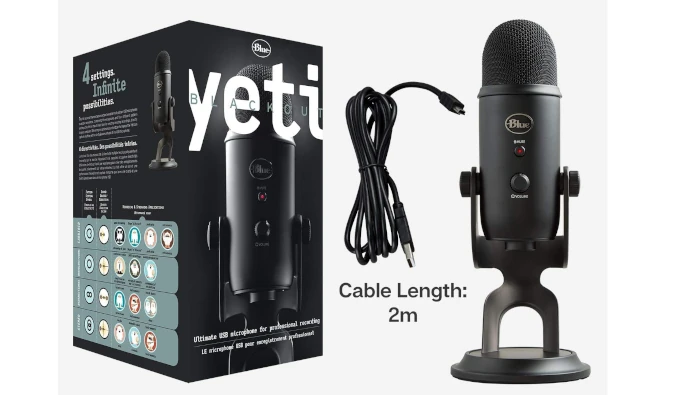
✅ Check Price on Amazon
As an Amazon Associate I earn from qualifying purchases.
1. Blue Yeti: The Blue Yeti is a popular choice among ASMR creators due to its versatility and excellent sound quality. It offers multiple polar patterns, including omnidirectional and bidirectional, which are perfect for capturing detailed ASMR sounds from various angles. Its plug-and-play USB connectivity makes it easy to set up and use, even for beginners. The Blue Yeti’s high sensitivity and low self-noise levels ensure clear and crisp recordings, making it a reliable choice for ASMR content.
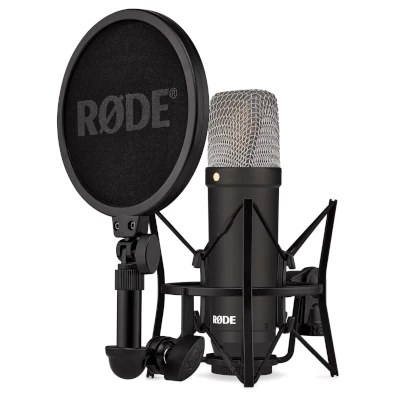
✅ Check Price on Amazon
As an Amazon Associate I earn from qualifying purchases.
2. Rode NT1-A: Renowned for its low noise level, the Rode NT1-A is one of the quietest studio microphones available. This feature is crucial for ASMR recording, where even the slightest background noise can be distracting. The NT1-A’s large diaphragm provides a wide frequency response, capturing the full range of sounds from subtle whispers to gentle taps. Its robust build quality and shock mount also help minimize handling noise, ensuring pristine audio quality.
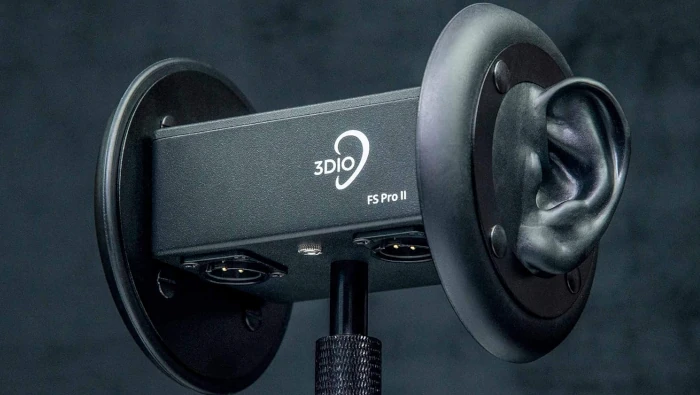
3. 3Dio Free Space Pro II:
For those looking to create a truly immersive ASMR experience, the 3Dio Free Space Pro II is a top-tier choice. This binaural microphone captures sound the way human ears hear it, creating a realistic 3D audio effect that enhances the listener’s experience. Ideal for recording ear-to-ear sounds, this microphone is favored by many professional ASMR artists. Its high sensitivity and excellent spatial accuracy make it perfect for creating deeply engaging ASMR content.
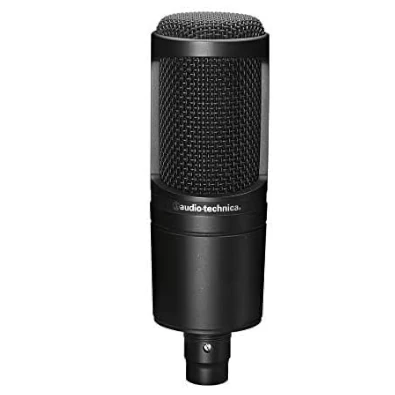
✅ Check Price on Amazon
As an Amazon Associate I earn from qualifying purchases.
4. Audio-Technica AT2020: The Audio-Technica AT2020 is a great entry-level microphone for ASMR enthusiasts. It offers excellent sound quality and a wide dynamic range, allowing for detailed and nuanced recordings. Its cardioid polar pattern effectively isolates the sound source, reducing unwanted background noise. The AT2020’s affordability and performance make it a popular choice for those starting in ASMR recording.
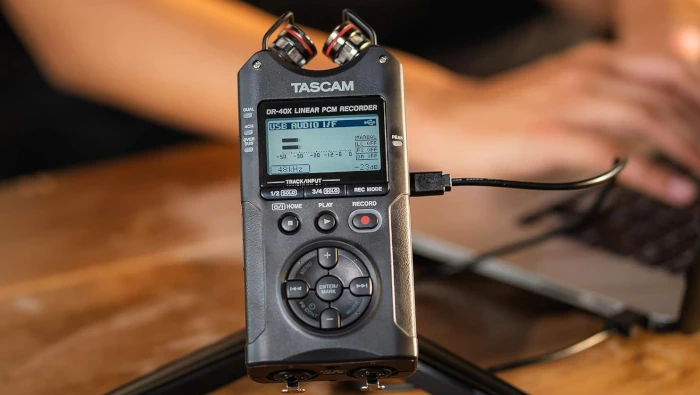
✅ Check Price on Amazon
As an Amazon Associate I earn from qualifying purchases.
5. Tascam DR-40X: For creators who need a portable option, the Tascam DR-40X is a versatile handheld recorder with built-in stereo microphones. Its compact design makes it ideal for recording ASMR content on the go. The DR-40X’s high-quality preamps and multiple recording modes provide flexibility and excellent audio clarity. Its ability to connect external microphones also adds to its versatility, making it a valuable tool for both beginners and experienced creators.
Selecting the right microphone depends on your specific needs and budget. Each of these recommendations offers unique features that cater to different aspects of ASMR recording. Investing in a quality microphone can significantly enhance your content and attract a larger audience. For more tips on recording high-quality audio, check out these recommendations.
Tips for Optimizing Your ASMR Recording Setup
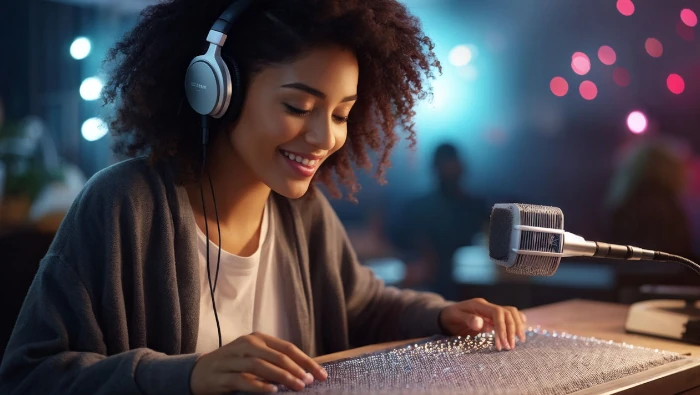
Creating high-quality ASMR content requires more than just a good microphone. Optimizing your recording setup can significantly enhance the clarity and immersive experience of your audio. Here are some essential tips to help you get the best out of your ASMR recordings.
1. Position Your Microphone Correctly: Microphone placement is crucial for capturing detailed and nuanced ASMR sounds. Place the microphone close to the sound source to ensure it picks up even the faintest sounds clearly. Experiment with different angles and distances to find the optimal position that provides the best sound quality. For binaural recordings, ensure the microphone mimics the position of human ears to create a realistic 3D soundscape.
2. Minimize Background Noise: ASMR recordings require a quiet environment to avoid distractions. Choose a recording space that is free from external noises such as traffic, air conditioning, or electronic hums. Use soundproofing materials like acoustic foam panels, heavy curtains, or even DIY solutions like blankets to reduce ambient noise. These steps help create a clean and controlled recording environment.
3. Use Pop Filters and Shock Mounts:
Pop filters and shock mounts are essential accessories for ASMR recording. A pop filter helps eliminate plosive sounds (like “p” and “b”) that can distort your recording. Shock mounts isolate the microphone from vibrations and handling noise, ensuring that only the intended sounds are captured. These tools are particularly useful when recording close-up sounds or when the microphone is mounted on a stand.
4. Control Room Acoustics: The acoustics of your recording room play a significant role in the quality of your ASMR audio. Hard surfaces can create unwanted echoes and reflections, so consider adding soft furnishings like rugs, cushions, and curtains to absorb sound. Acoustic panels and bass traps can further improve sound quality by reducing echo and providing a more neutral recording environment.
5. Monitor Your Recordings: Regularly monitor your recordings using quality headphones to catch any issues early. Listening in real-time allows you to adjust microphone placement, volume levels, and other settings on the fly. This proactive approach helps ensure that your recordings are as clean and high-quality as possible, minimizing the need for extensive post-production edits.
6. Invest in Additional Equipment: While the microphone is the most critical component, other equipment can enhance your recording setup. An audio interface can provide better sound quality and more control over your recordings. Portable recorders offer flexibility for capturing ASMR sounds in different environments. High-quality headphones are essential for accurate monitoring and editing. For more tips on recording vocals, explore this guide.
By following these tips and investing in the right accessories, you can optimize your ASMR recording setup to produce high-quality, immersive content that resonates with your audience.
How to Maintain and Care for Your ASMR Microphone
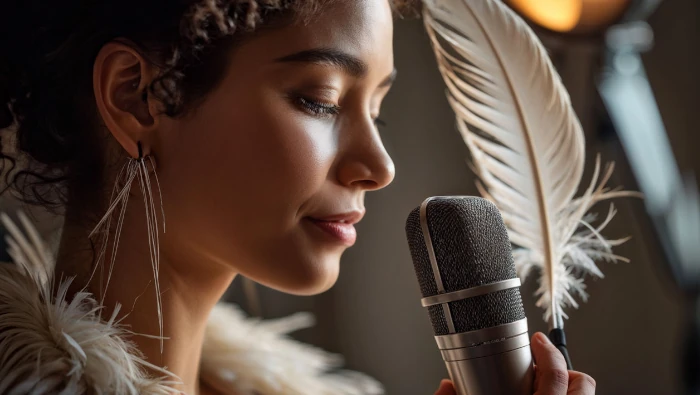
Maintaining and caring for your ASMR microphone is essential to ensure its longevity and consistent performance. Proper care not only preserves the quality of your recordings but also protects your investment in high-quality audio equipment. Here are some tips to keep your ASMR microphone in top condition.
1. Regular Cleaning: Dust and debris can accumulate on your microphone, affecting its performance. Regularly clean your microphone using a soft, dry cloth. For more thorough cleaning, use a brush or compressed air to gently remove dust from the grille and other hard-to-reach areas. Avoid using water or cleaning solutions, as moisture can damage the microphone’s internal components.
2. Proper Storage: When not in use, store your microphone in a protective case or cover to shield it from dust, moisture, and physical damage. If your microphone came with a storage pouch or case, use it. Keep the microphone in a dry, temperature-controlled environment to prevent condensation and other moisture-related issues.
3. Handle with Care: Always handle your microphone with care to avoid physical damage. When setting up or adjusting your microphone, hold it by the base or stand rather than the grille. Avoid dropping or knocking the microphone, as even minor impacts can affect its internal components and sound quality.
4. Use a Shock Mount:
A shock mount can help protect your microphone from vibrations and handling noise. It isolates the microphone from physical impacts and reduces the risk of damage from accidental bumps or movements. This accessory is particularly useful for ASMR recording, where sensitive microphones are often used.
5. Monitor Humidity Levels: Moisture can be detrimental to your microphone’s health. Keep the humidity levels in your recording space under control. Using a dehumidifier can help maintain a stable environment, especially in areas with high humidity. Avoid exposing your microphone to sudden temperature changes, as this can cause condensation to form inside the microphone.
6. Regular Maintenance Checks: Periodically check your microphone and its accessories for any signs of wear or damage. Inspect cables, connectors, and stands to ensure they are in good condition. Replace any worn or damaged parts promptly to avoid further issues. Conducting regular maintenance checks helps you catch potential problems early and keep your equipment in optimal working condition.
7. Troubleshooting Common Issues: If you notice any issues with your microphone, such as reduced sound quality or intermittent performance, troubleshoot the problem promptly. Check connections, cables, and power sources to identify the cause. Refer to the microphone’s user manual for specific troubleshooting tips and solutions. Addressing issues quickly can prevent further damage and maintain your microphone’s performance.
For more tips on maintaining your recording setup, explore this guide.
By following these maintenance and care tips, you can ensure your ASMR microphone continues to deliver high-quality audio for your recordings. Proper care and handling will help you get the most out of your equipment, providing your audience with the best possible listening experience.
Conclusion and Final Thoughts
Investing in a quality microphone and optimizing your recording setup are crucial steps in creating exceptional ASMR content. Whether you’re a beginner or a seasoned creator, having the right equipment makes a significant difference in the clarity and immersion of your recordings.
High sensitivity, low self-noise levels, and the right directional pattern are key features to consider when choosing a microphone for ASMR. Microphones like the Blue Yeti, Rode NT1-A, and 3Dio Free Space Pro II offer various benefits, from versatility to binaural recording, catering to different ASMR recording needs. Additionally, optimizing your recording setup with proper microphone placement, soundproofing, and the use of accessories like pop filters and shock mounts can further enhance the quality of your recordings.
Maintaining and caring for your ASMR microphone ensures its longevity and consistent performance. Regular cleaning, proper storage, and careful handling are essential practices. Using a shock mount and monitoring humidity levels can protect your microphone from physical and environmental damage. Regular maintenance checks and prompt troubleshooting of common issues help keep your equipment in optimal working condition.
Creating high-quality ASMR content involves more than just the right microphone. It requires a well-optimized recording setup and regular maintenance to ensure the best possible audio experience for your audience. By focusing on these aspects, you can elevate your ASMR recordings, attracting more viewers and providing a deeply relaxing experience that keeps your audience coming back for more.
For more insights into creating high-quality audio content, visit How to Sing High Notes and Become a Complete Singer. Happy recording!

